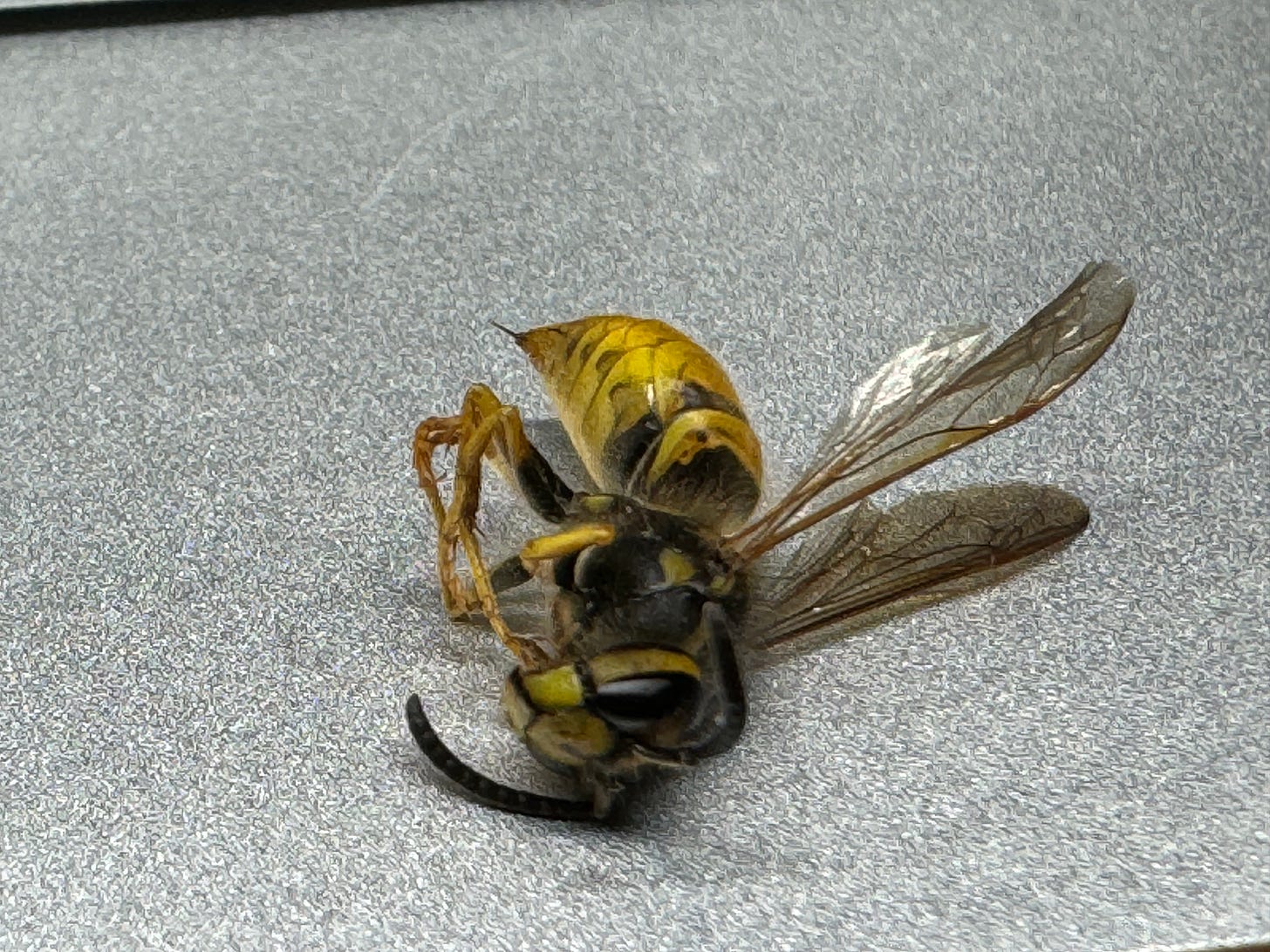This isn’t the essay I intended to write today at all; yet never mind. I believe you’ll find it interesting.
Yellow jackets are small, wasps, often mistaken for bees. As a beekeeper, I’ve discovered that most people don't know the difference between wasps and bees. Anything that flies and looks vaguely like a bee must be a bee. Furthermore, they think that bees "bite.”
Maybe it’s just my subjective impression, but I begin to think that children pay no attention whatsoever in their biology classes in elementary school. Bees and wasps never bite. They both sting; and they sting using a remarkable and decidedly miraculous injection system for a poisonous venom consisting of proteins that cause great pain to the receiver.
I dislike yellow jackets, because they’re aggressive insects with a more painful sting than honeybees. Yet with the imminent demise of almost all the flying insects — the insect holocaust is upon us, and in the end, it will kill nearly all the birds, many of the freshwater fish and amphibians and then most of the trees and plants around us—I begin much more to appreciate yellow jackets as valuable and even essential creatures.
I have the corpse of a yellow jacket on my desk right now. It’s been sitting here for several days; it got into my office when I had the window open several weeks ago, and it eventually died and landed here.
As I so often do with small and apparently quite trivial things, I’ve kept it in front of me as an object of contemplation.
And I daresay you are about to see a reasonable demonstration of why trivial things ought to be paid much, much more attention to.
Keep reading with a 7-day free trial
Subscribe to Zen, Yoga, Gurdjieff: Lee's Gurdjieff Newsletter to keep reading this post and get 7 days of free access to the full post archives.





